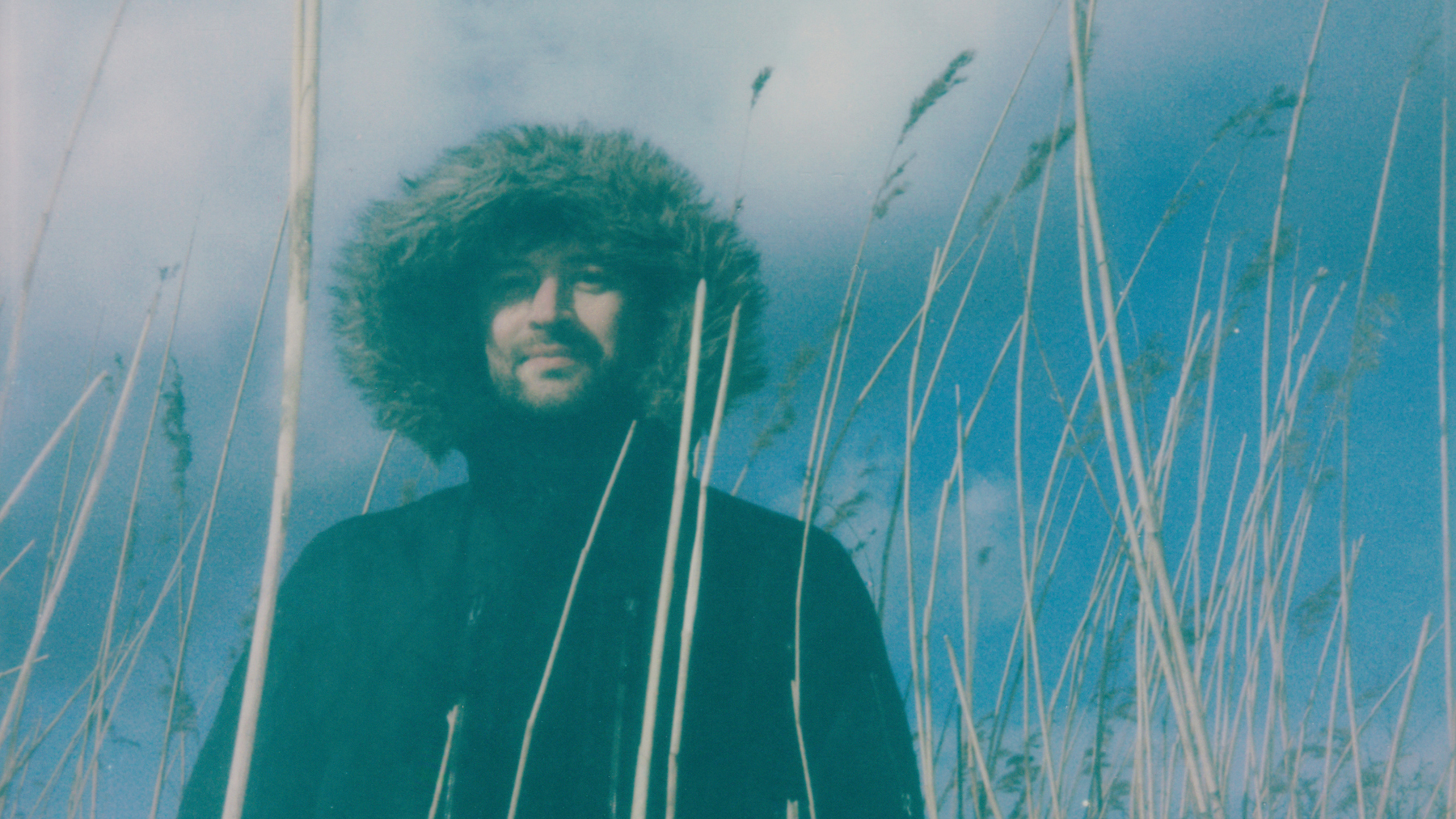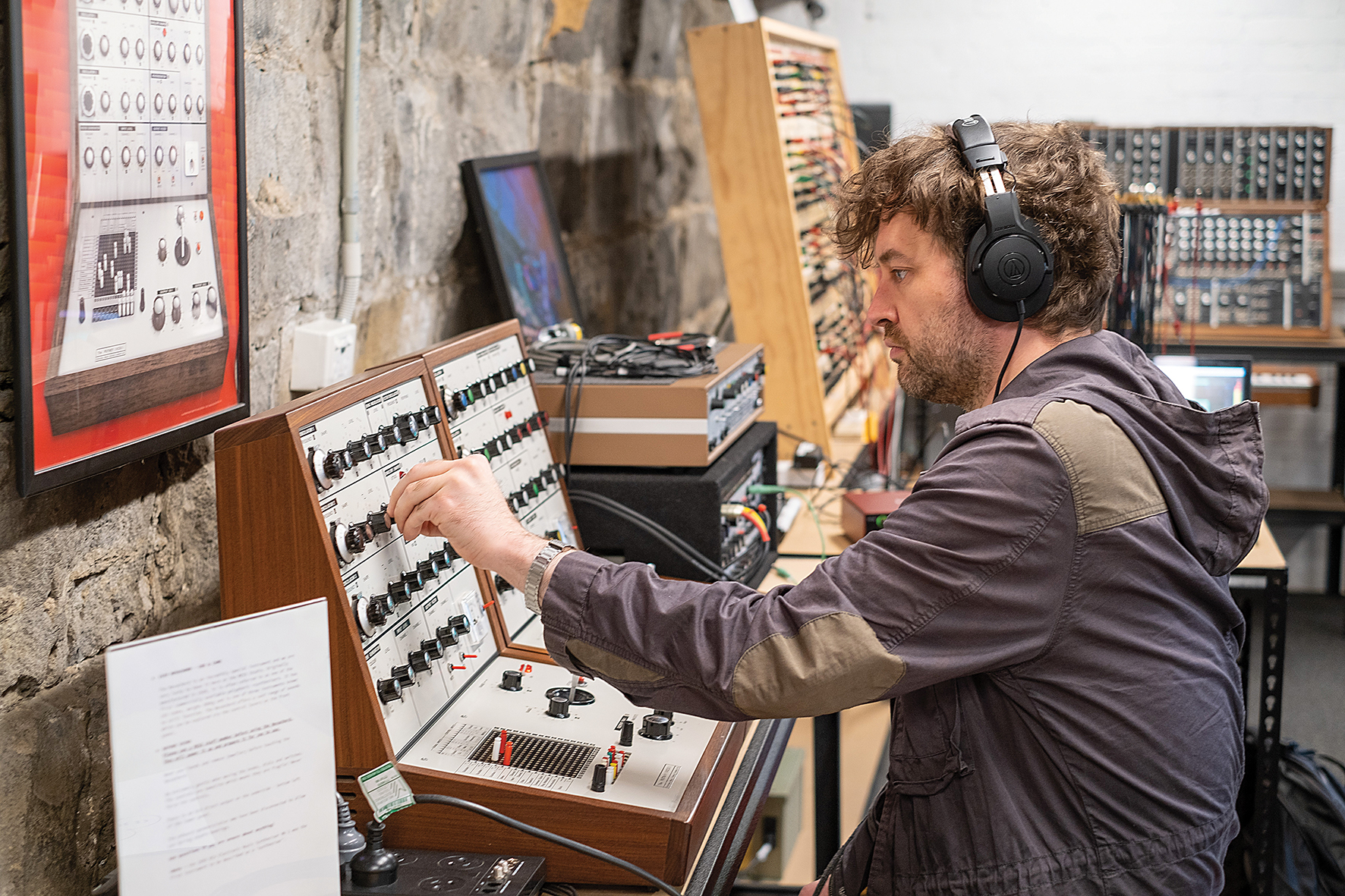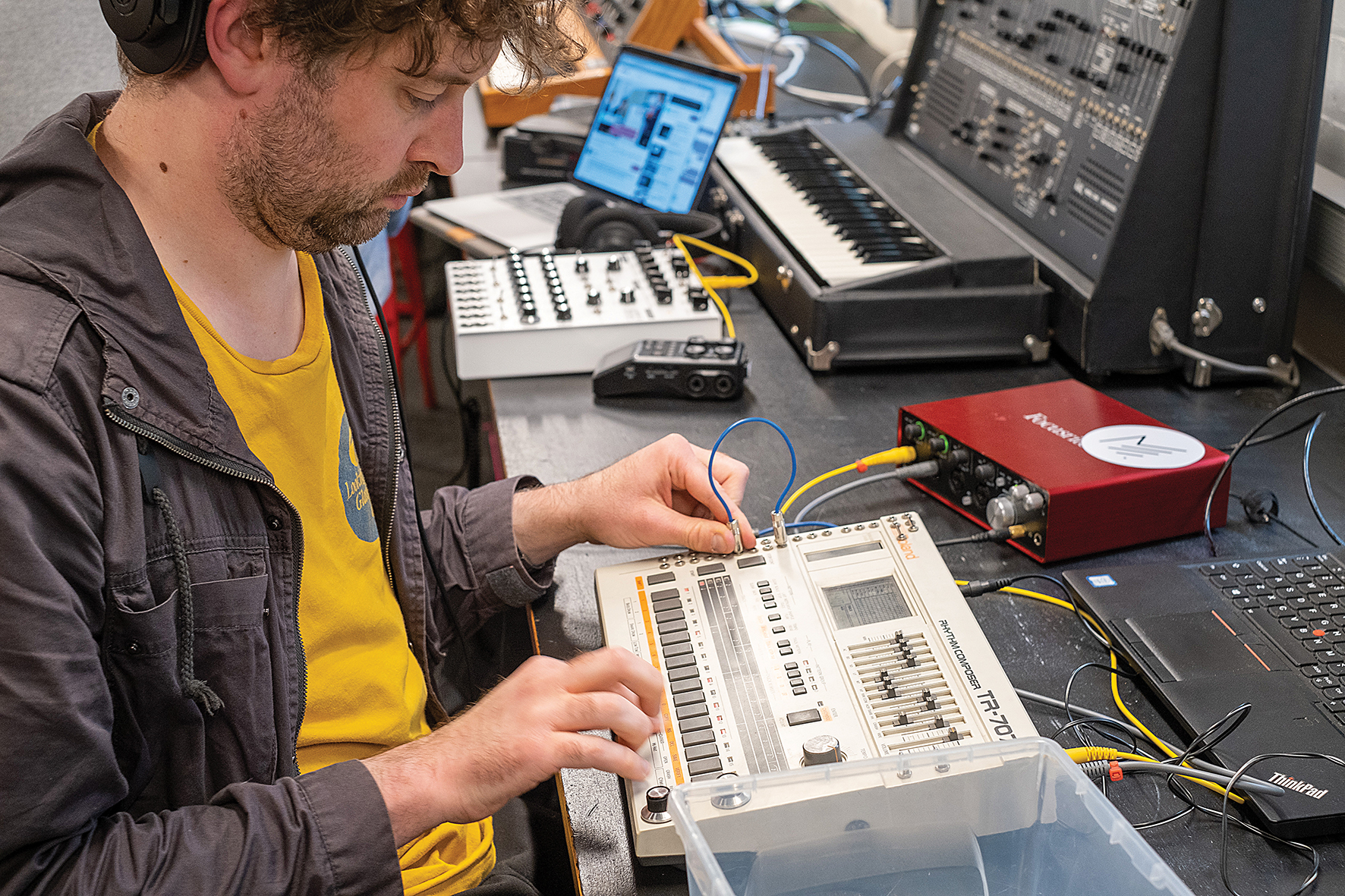
Nathan Fake is, well, a bit like you and us. He grew up reading magazines about what gear his favourite musicians liked and then started to emulate them. With influences like Aphex Twin and Orbital, it was pretty obvious that his music would follow an electronic path.
He’s consequently also developed an obsession with the gear they used back then, amassed a list of classic synths and even some classic software that he still uses alongside his more up to date Ableton Live-based setup.
After releasing his first music in 2003, Nathan found a home on some legendary labels including Ninja Tune and Border Community, plus his own Cambria Instruments. His music also earned him some very high-profile remix jobs including on tracks by Radiohead and Jon Hopkins.
He has since built up a huge live reputation, playing sold-out venues across the globe, all using an improvised setup of hardware and software. As he celebrates 20 years of music making with new album Crystal Vision, Nathan reveals that ‘just doing your own thing’ can be the secret to longevity.
How did you start out in music in the first place?
“Well I grew up in Norfolk. I was really into electronic music as a teenager and eventually wanted to make my own music as I had a lot of ideas in my head for tracks and stuff. It was a dream to be a musician I guess, so it’s pretty amazing I’ve actually ended up being able to do it professionally.”
How did that ‘professional’ part of your career start out?
“After I’d released a few records and started getting a bunch of gigs, I was then able to do music full time mainly from the money I got from playing shows. I think that was around 2005 or 2006 that I started playing club gigs regularly, and then started touring my first album, which came out in 2006.”
What is your overall philosophy or approach when it comes to music?
“I think basically just to do my own thing, not be too worried about trends or what other people are doing, or being worried about what’s trendy in music at the moment. Also if it feels good, do it! Then it doesn’t matter what style you feel like making or what sounds or instruments you want to use.”
When and how did you discover the route to computer music making and how has it changed the way you work?
“I started off using hardware, like a Roland groovebox and Boss sampler, and when I went to college I discovered using Cubase on PCs and Ataris. Eventually I saved up and bought a PC and started using Cubase and Cool Edit Pro, software which I still use to this day actually.
“Making music on a PC obviously opened up a new world of arranging and writing music, and also sound design and much more sophisticated methods of composition. Making stuff on hardware still produces different results to working on a computer though, so it’s interesting to use both.”
Tell us about the gear in your studio?
“My favourite bits of hardware are my Roland SH-09 and the Roland MC-202. Also I love my Korg Prophecy and Korg Minilogue. Also I use my Yamaha DX and CS Refaces a lot. I love FM synthesis; it’s fun to use VST and hardware synths for that stuff. The Yamaha DX200 is a fun thing for that too. It’s a bit like a groovebox and has this quite awkward interface for synthesis but I love using it, it’s quite quirky.”
That’s a lot of cool hardware. Tell us about your favourite plugins?
“Waldorf A1. My all-time favourite VST. It came with the original version of Cubase SX but I use the .dll file in Ableton, too. It’s a mainstay of my live set still as it’s so lightweight CPU-wise. I know it inside out so can do a bunch of stuff with it live and when recording in the studio.
“LOFI+. This is a delay plugin which my friend Petter from Sweden gave me years ago. It’s a really basic delay thing but also really useful for the live set as you can kind of use it as a looper too, albeit a very crude one, but that makes fun results, I think.
“ToneBoosters ReelBus. An amazing tape emulator that works really well on stems, and also on the master if you want to simulate recording to tape or cassette. It works really well as a distortion plugin too or just for particular touches of EQ.
“Oeksound Soothe2. This is amazing for treating problematic resonant or harsh frequencies in tracks or sounds. It’s possible to overdo it but also that can create weird effects, so all in all it’s useful for practical mastering stuff and also as in effect in its own right.
“Soundtheory Gullfoss. I have no idea how this works, but it adds really lush EQ balancing to tracks if you use it subtly or in a particular context. It’s a bit mysterious but really clever how it works.”

Do you collaborate with other producers at all?
“I did a collaboration with Wizard Apprentice which was done remotely. She’s based in Oakland, California, so we sent each other files and stuff. That went really smoothly, as I was super happy with the stuff she sent me and was really easy to work with. A collaboration with Clark went in a similar way. Even though we’re good mates and both live in the UK, we just sent each other stuff and he recorded some synth parts that I worked into the track.”
How do you tend to start a track?
“I actually mostly start with drums. Even if I have a melody in my head, I’ll lay down a drum track first and then fit a melody and bassline around it. Then a lot of the time I’ll record a bunch of live jams with the loop or track and then make an edit out of that, or I’ll arrange the track in a more traditional DAW sense.”
How do you know when a track is done?
“Oh, it differs really. Sometimes I just have no idea when something’s finished. Say if I’m working on an album, it’s sometimes easier to tell yourself something’s finished for the sake of finishing the album, but if it’s a more casual track you can be messing about with it for months or years. I find it pretty useful to put stuff on my iPod and listen to it away from the studio, as you can just listen to it a bit more objectively without being tempted to tinker with it.”
Talk us through at least one of your production tricks or processes ?
“I think the live thing is quite a key part of my sound these days. I think jamming in Ableton or on hardware or whatever and just recording it, whatever happens. That’s a good way to come up with weird ideas or things that you wouldn’t come up with otherwise. Also I think getting your own voice melodically and musically is a really important thing, rather than looking up production tips on YouTube or something and trying to copy how other people sound.”
What’s on your gear wishlist?
“It’s a bit random, but I’d really like a Yamaha Z1. I’ve got a thing about these obsolete ’90s digital synths that seem a bit unwieldy these days. I’d love to have a go with modular stuff also, but, to be honest, I wouldn’t know where to begin with that stuff. It might be fun to collaborate with someone in the studio who’s well versed in it.”

What would you like to see developed in terms of production technology?
“I think there should be more compatibility between 32-bit and 64-bit software, as I’m really old fashioned with my software. But I’d love to be able to use old plugins with the latest version of Ableton.”
Which track do you wish you’d produced and why?
“Orbital’s Chime. It’s beautiful, simple and iconic. I love every single part of it.”
What’s the best advice you’ve ever been given by anyone?
“For live work, try and make your set as live as you can, like don’t stick to playing stems or WAVs of finished tracks. Devise a system to use synths live and make the performance as improv-based as you can. That’s when the most exciting and musically engaging things happen in a live scenario. In terms of working in the studio, the same thing I guess. Incorporating live stuff into studio tracks always makes for more interesting and adrenaline-packed tracks.
“From the music industry: again, just do your own thing. Make friends with other promoters, have a good time, but concentrate on doing totally your own thing. Also be nice a person, don’t be a dick!”
What else do you have planned for the future?
“My album Crystal Vision is out now on my own label, Cambria Instruments. The album itself is quite a chill, fun record, but the live show will be more intense. I’ll have some good visuals too made by my friend Dom who also did the album artwork.”
Nathan Fake's Crystal Vision is out now on Cambria Instruments.







